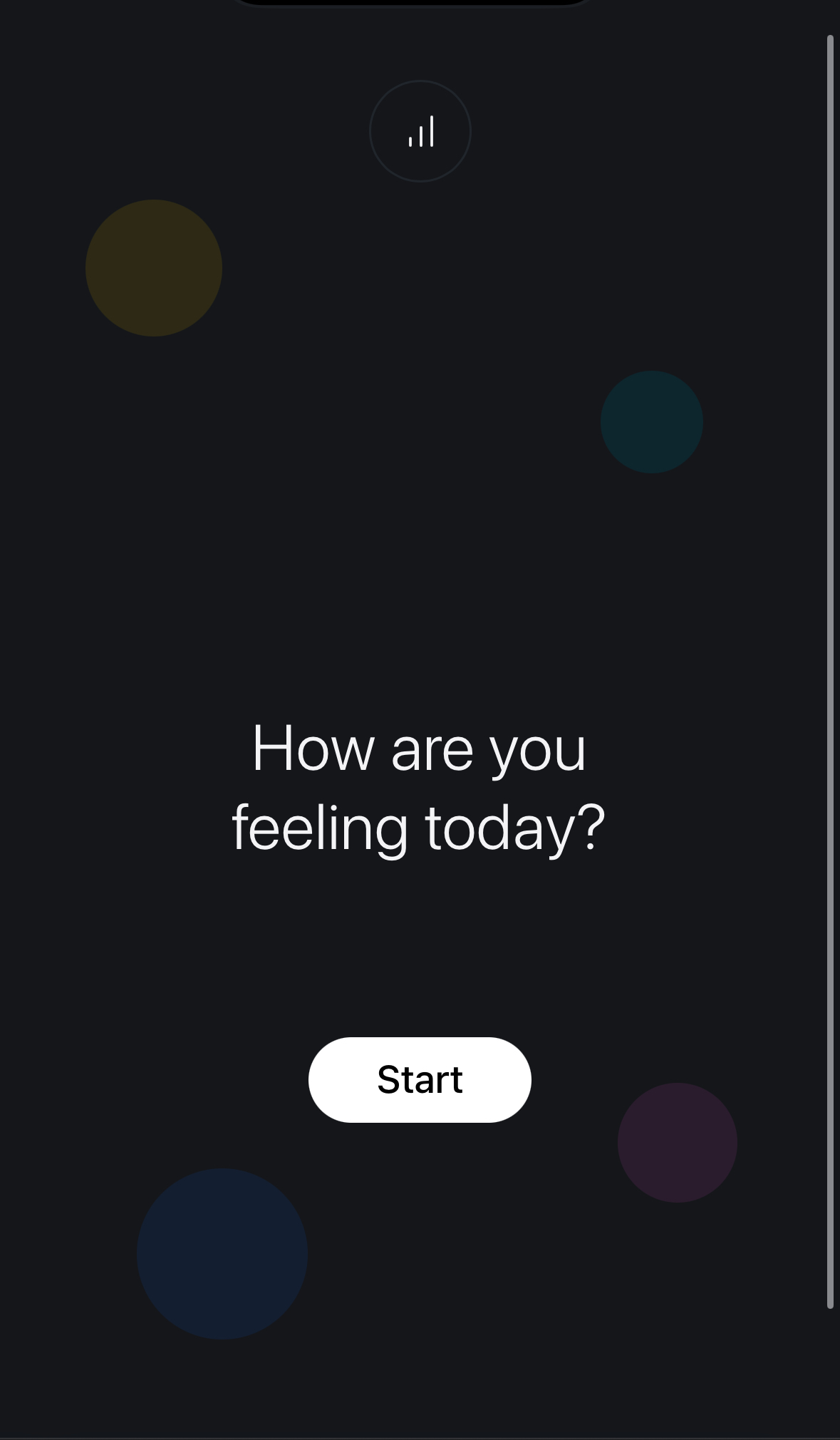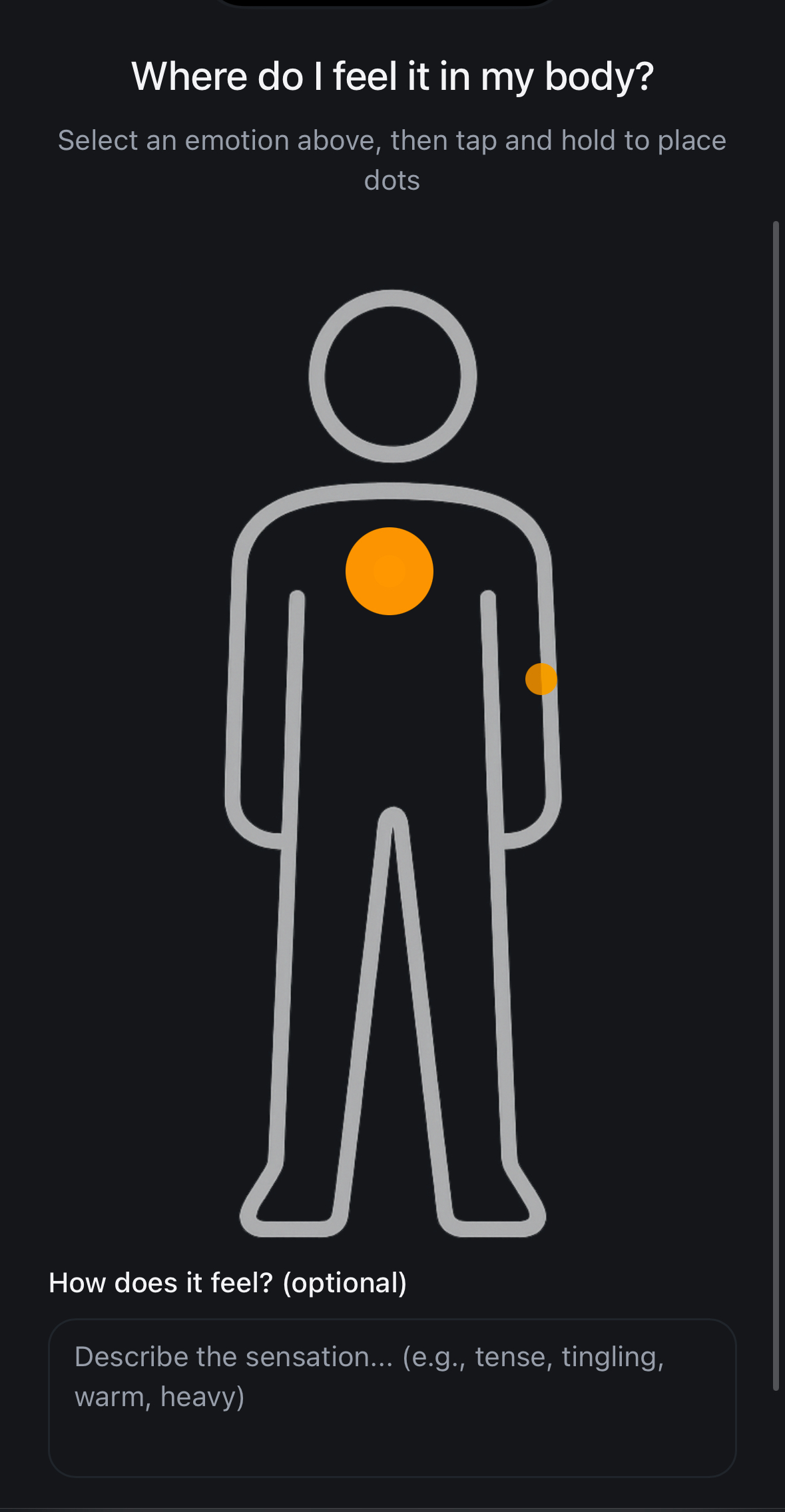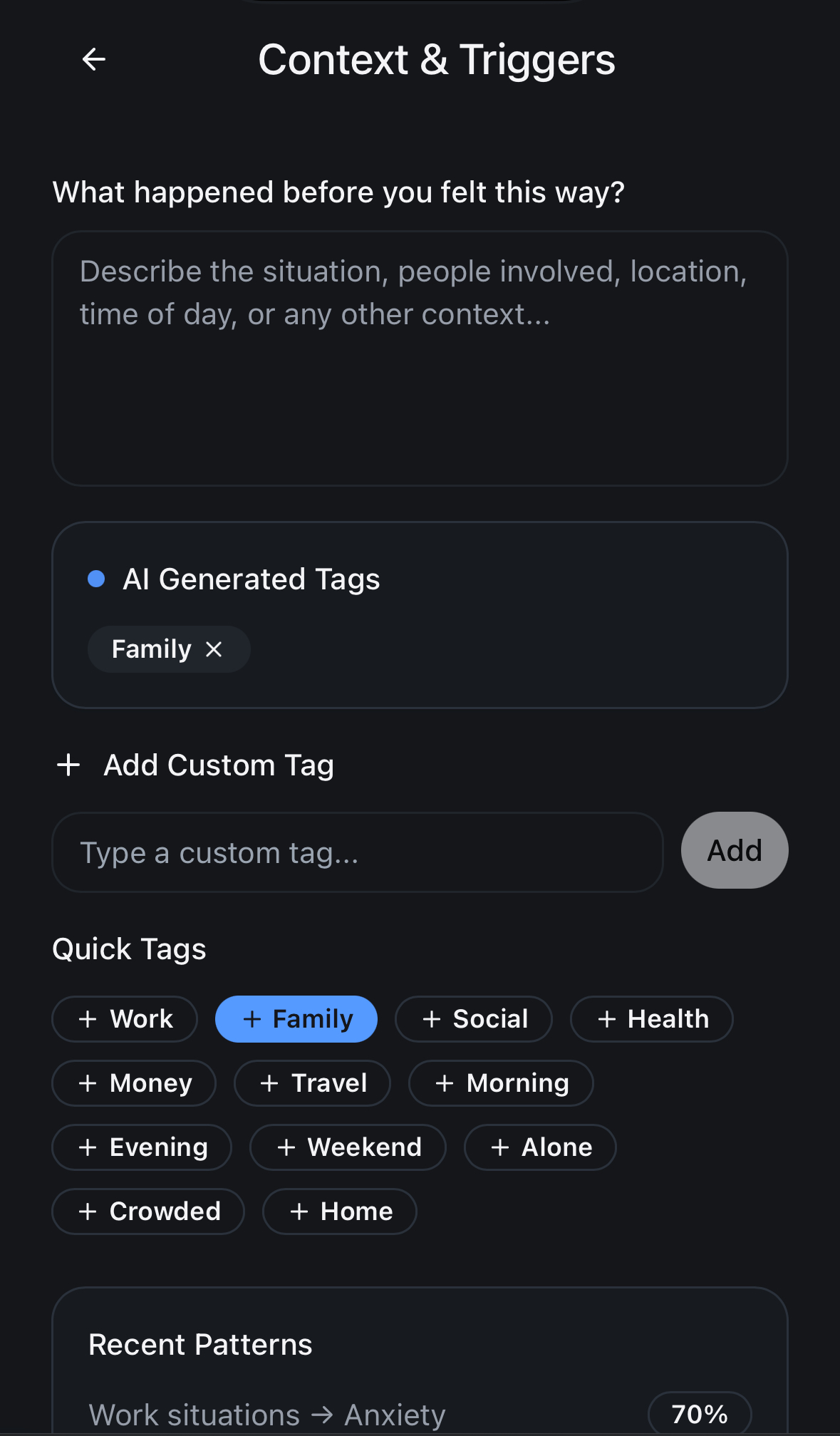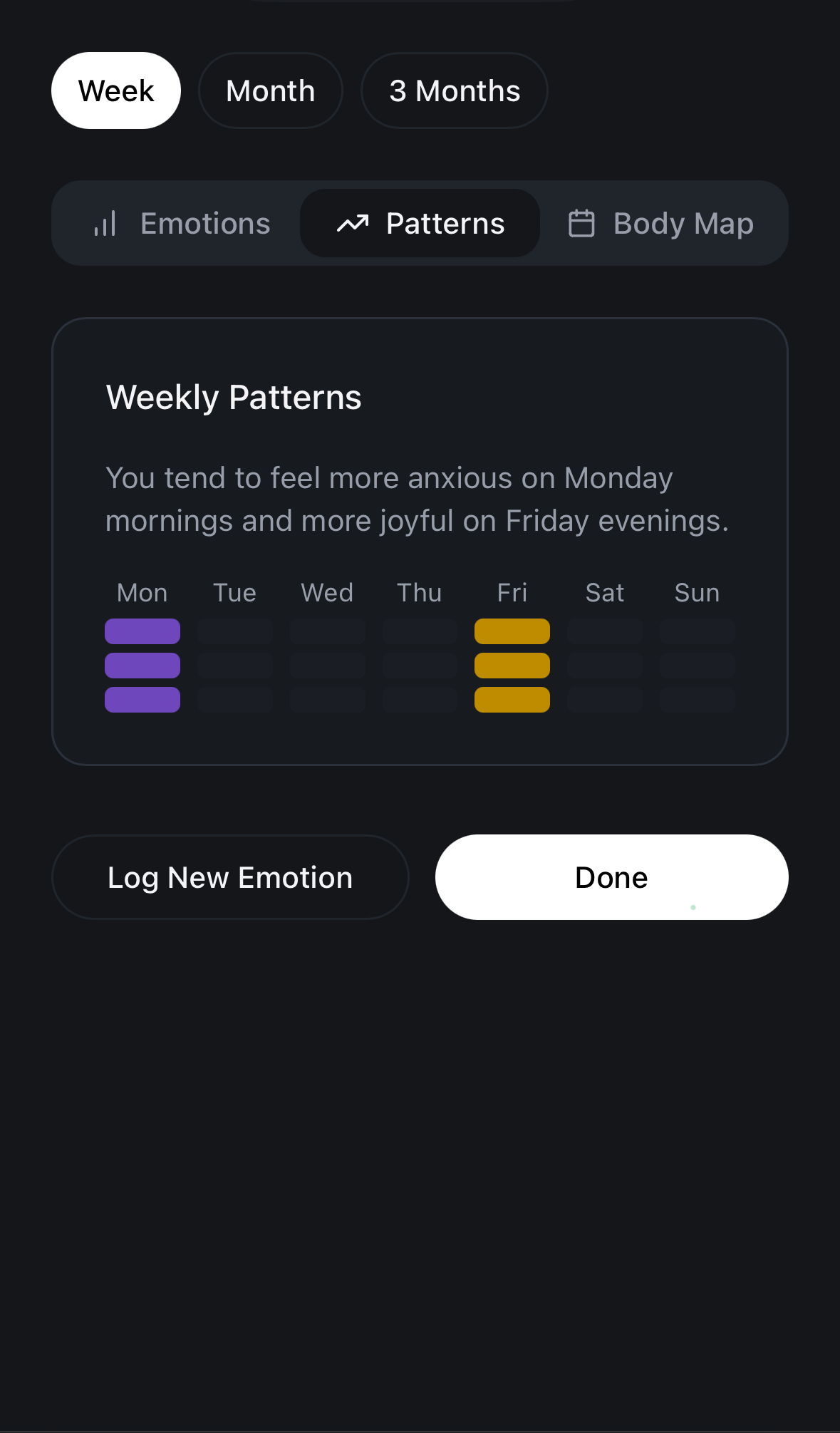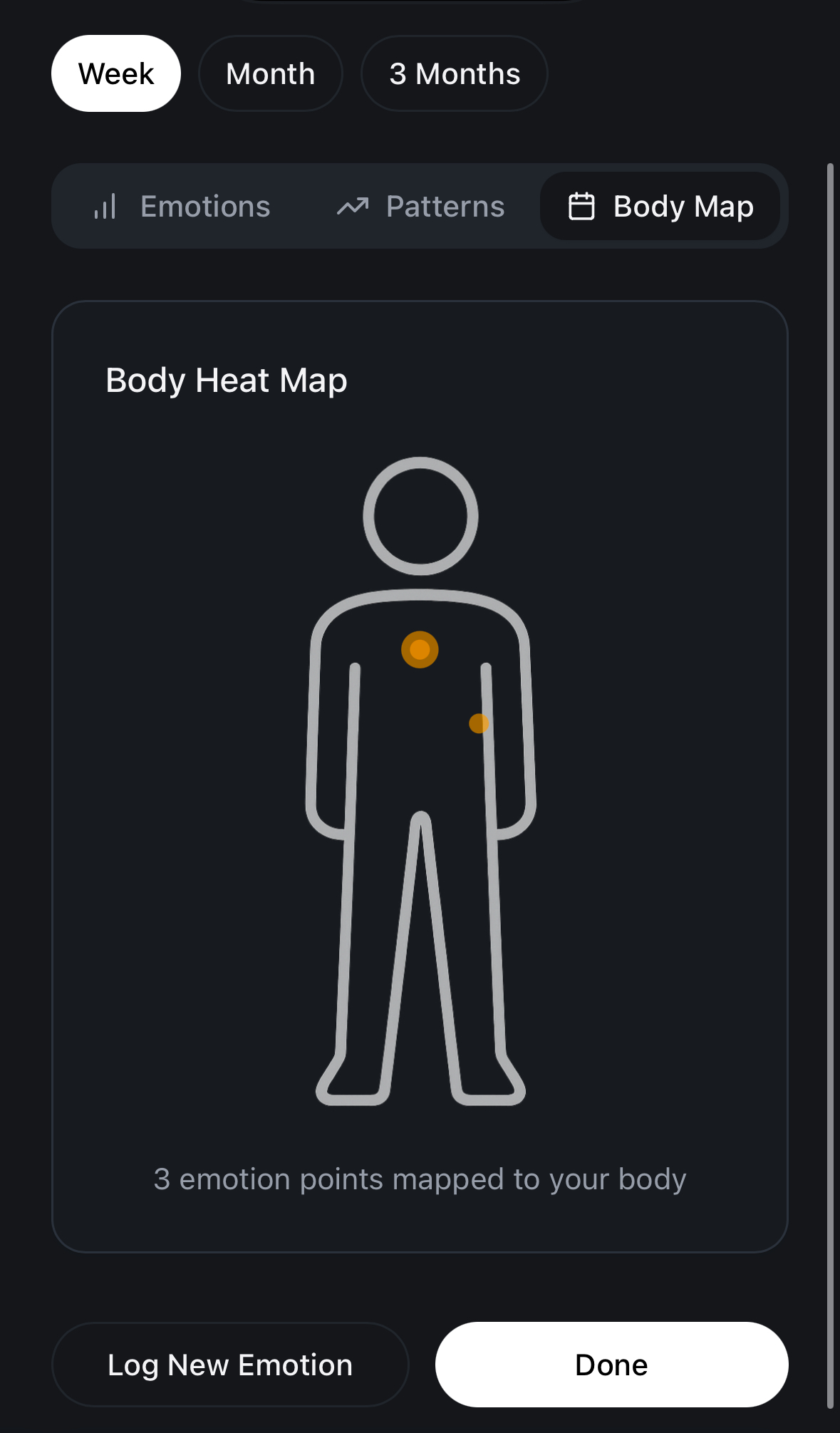EMOTION JOURNAL APP
_These screens were partly designed with the help of AI tools: Lovable
This project aims to help people track their emotions and the somatic sensations connected to them.
Psychological Idea
CBT/DBT
Try the app here︎︎︎
(please open it on mobile)



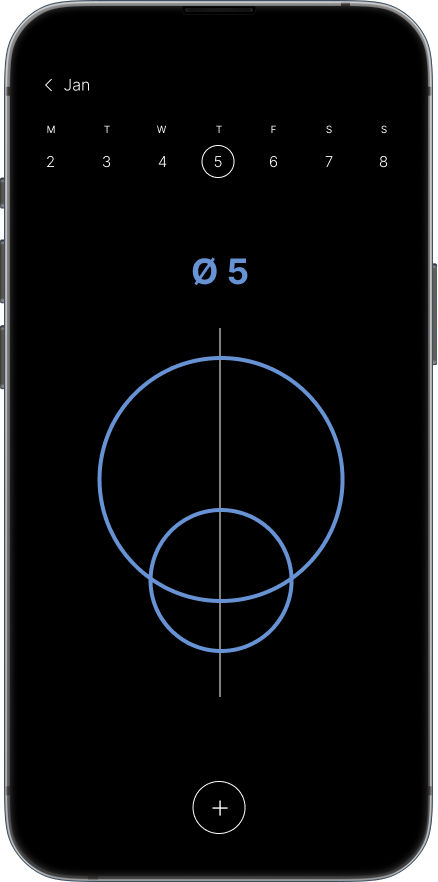

Step 1
Design Mockups in Figma

Step 2
Upload to Lovable + Prompt
Purpose:
A simple, intuitive app focused solely on helping users log, understand, and reflect on their emotions.
A simple, intuitive app focused solely on helping users log, understand, and reflect on their emotions.
📱 App Screens & Functionality
1. Welcome Screen
- A warm, inviting screen to introduce the user to the app.
- Visual style and layout aligned with the design in the provided screenshot.
- Purpose: Onboarding and setting the tone for calm emotional reflection.
2. Emotion Selection Screen
- Users choose from a range of emotions displayed as chips.
- Emotions are categorized based on the Emotion Wheel.
- Each emotional category is color-coded (e.g. all anxiety-related emotions are blue, anger-related ones might be red, etc.).
- Multi-selection possible.
3. Body Sensation Mapping Screen
- Displays a gender-neutral body outline.
- Headline: "Where do you feel the emotion in your body?"
- Users can tap on the parts of the body where the emotion is physically felt.
- Each tap places a transparent, colored dot on that spot.
- The longer the user taps, the larger the dot becomes (indicating intensity).
- A text field allows users to describe the bodily sensation in that spot (e.g. “tight”, “tingling”, “burning”).
4. Emotion Statistics & Trends Screen
- Shows analytics and trends over time.
- Key features:
- Emotion timeline showing which emotions were logged when.
- Heatmap body image summarizing where emotions are felt most over a selected period.
- Emotion frequency graphs over time (bar, line, pie, or scatter plots).
- Filters to select time ranges and emotion types.
5. Trigger & Situation Logging Screen
- Users can add context for each logged emotion:
- What happened just before?
- Who was involved?
- What was the setting?
- AI processes the input text to:
- Identify keywords and generate tags (e.g. “conflict”, “deadline”, “family”, etc.).
- Display these tags as chips for future selection.
- Patterns become visible over time:
- See which situations or people tend to elicit specific emotions.
- Find recurring triggers or emotional loops.
First round




Progress Examples
The first three images were generated using prompts that aimed to describe a more detailed and realistic figure. When those attempts didn’t yield the desired result, I provided a reference image and requested it to be implemented directly.




Learning
What Didn’t Work
- Vague prompts led to abstract, robotic shapes
- No image reference = AI misinterpretation
- Tool biased toward minimal, neutral figures
- Model lacked training on realistic silhouettes
What Worked
- Providing a clear reference image
- Direct implementation instead of prompting
How to Improve Prompting
- Be ultra-specific (anatomy, posture, style)
- Include visual references early
- State use case (e.g., emotion mapping app)
- Describe the desired visual style clearly (e.g., minimal, gender-neutral, human-like)
Design 2
